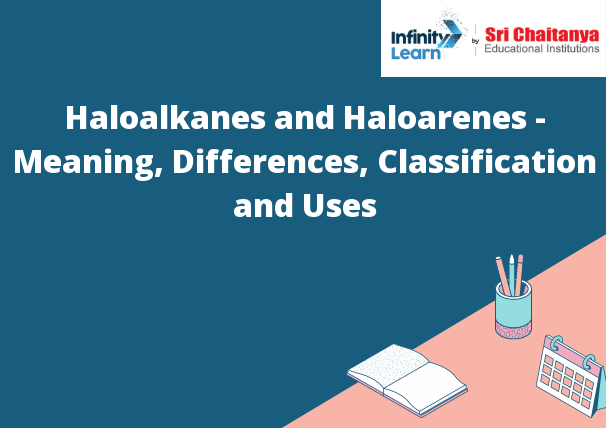Table of Contents
Introduction to Haloalkanes & Haloarenes
Haloalkanes are a family of organic compounds that contain one or more halogens atoms (fluorine, chlorine, bromine, or iodine) attached to a carbon atom. The halogens atoms are very electronegative and pull electron density away from the carbon atom, making these molecules very reactive.
Haloalkanes can be classified into two categories, depending on the number of carbon atoms in the molecule. Alkanes have only one or two carbon atoms, while alkenes have three or more. Haloalkanes with more than one carbon atom are called haloarenes.
The main difference between haloalkanes and haloarenes is that haloalkanes are very reactive due to the presence of the halogen atom, while haloarenes are not as reactive. This is because haloalkanes have only one halogen atom, which is highly reactive, while haloarenes have multiple halogen atoms, which are not as reactive.

Haloalkanes
They are a type of organic compound which have a carbon atom linked to a hydrogen atom by a covalent bond. The carbon atom is also linked to an alkyl group, which is a group of atoms containing only carbon and hydrogen. The simplest haloalkane is methane, which has one halo (fluorine) atom attached to the carbon atom.
The haloalkanes are all colourless, odourless, and flammable. They are soluble in organic solvents, but insoluble in water. They are relatively stable compounds, but can oxidized to form alcohols and aldehydes.
The haloalkanes are all relatively unreactive, but can reacted with sodium hydroxide to form sodium alkyls. They can also be reacted with lithium aluminium hydride to form alkyl halides.
Haloarenes
They are a class of aromatic hydrocarbons that contain one or more halogens atom. Halogen atoms can attached to the aromatic ring in different positions, and the position of the halogen atom can affect the properties of the haloarene. For example, chlorobenzene is a colorless liquid with a sweet odor, while bromobenzene is a colorless liquid with a pungent odor.
Differences between Haloalkanes and Haloarenes
- Haloalkanes are a type of organic compound that contain a carbon-halogen bond. Saturated, meaning they have no double or triple bonds between carbon atoms. Haloalkanes are also relatively inert, meaning they don’t react easily with other compounds.
- Haloarenes, on the other hand, are a type of organic compound that contain a carbon-aryl bond. They are unsaturated, meaning they have at least one double or triple bond between carbon atoms. Haloarenes are also more reactive than haloalkanes, meaning they react more easily with other compounds.
Use of Haloalkanes and Haloarenes
Haloalkanes and haloarenes used in a variety of applications. Some common applications include:
- Manufacture of plastics, pesticides
- As fire retardant
- Manufacture of solvents, degreasers
What are Haloalkanes?
Haloalkanes are a family of organic compounds that contain one or more halogens atoms bonded to carbon atoms. Therefore the halogen atoms can be fluorine, chlorine, bromine, or iodine.
What are Haloarenes?
The Haloarenes a group of organic compounds that composed of a benzene ring with one or more halogen atoms attached.
Haloalkanes and Haloarenes Other Application
Haloalkanes also used as flame retardants, plasticizers, and also solvents.








